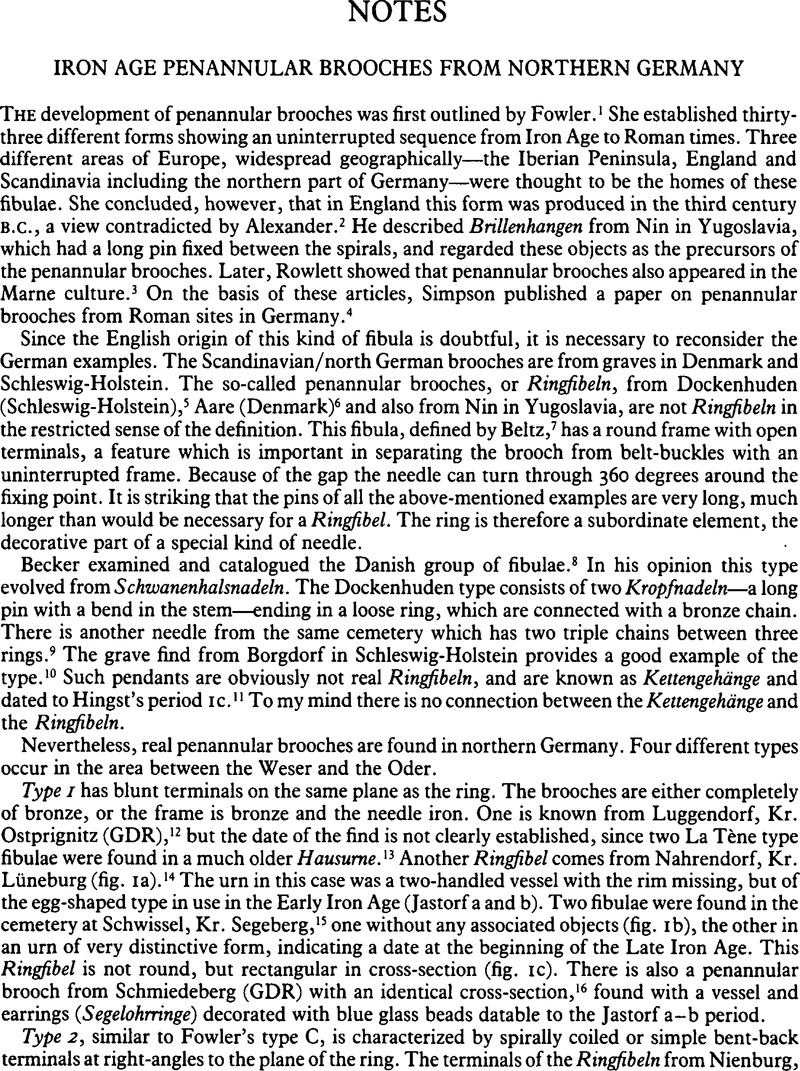No CrossRef data available.
Article contents
Where the Lightning Struck: R.I.B. 1426
Published online by Cambridge University Press: 21 April 2011
Abstract

- Type
- Notes
- Information
- Copyright
- Copyright © The Society of Antiquaries of London 1986
References
Notes
32 Ammianus Marcellinus, 23.5.12-13 (at the outset of Julian's disastrous invasion of Persia). Scholiast on Persius, , Sat. ii.26–7Google Scholar(see Harvey, R. A., A Commentary on Persius (1981),Google Scholarad loc.), ‘bidental dicitur locus sacro percussus fulmine, qui bidente ab aruspicibus consecratur, quer n calcare nefas est’. The derivation from bidens is denied by Porphyrion in his note on Horace, , Ars Poetica, 471,Google Scholar but is found elsewhere. See also , Pauly-Wissowa, Real-Encycläpddie, iii (1899), 429–31,Google Scholars.v. bidental.
33 Pietrangeli, C., ‘Bidentalia’, Atti della Pontificia Accademia Romana di Archeologia, Rendiconti,xxv-xxvi (1949-1951), 37–52Google Scholar.
34 Collected by de Ruggiero, Dizionario Epigrafico, s.v.fulmen, and by Pietrangeli (see note 33). They include, for Rome: C.I.L. vi, 205 and 30714 (I.L.S. 3054), 206, 36774, 30877-80; in Italy: C.I.L. v, 6778 (divom fulgur conditum), A.E. 1913, 218(fulgur dium), A.E. 1927, 114, A.E. 1973,180, A.E. 1975, 378,A.E. 1978, 318, A.E. 1979, 200; and in Gallia Narbonensis: C.I.L. xii, 1047, 2769, 2888, 2970, 3023, 3047 (I.L.S. 3055, fulgur divom), 3048-9, 4100, A.E. 1965, 190.
35 R.W. (1867), 139; L.S., no. 104=C.I.L. vii, 561; Handbook (1978), ed. C. M. Daniels, 102. I am grateful to Professor Eric Birley for drawing my attention to the sources discussed in this paragraph and the next.
36 Printed at the end of Arch. Ael. 1st ser. iv (1855), at p. 12.
37 Proc. Soc. Antiq. Newcastle upon Tyne, 3rd ser. vii (1915-1916), 239Google Scholar.
38 R.W. (1851), 164=R.W. (1853), 131.
39 See previous note; Arch. Ael. 2nd ser. i (1857), 232Google Scholar; R.W. (1867), 139.
40 C.I.L. vii, 56i=L.S., no. 104 and the first sentence of L.S., no. 105, which appears just below the illustration offulgur divom.
41 Hodgson, J. C., A History of Northumberland, iv (1897), 193Google Scholar and 187.
42 The book is now in Durham University Library, Palace Green, accession no. 90, 184. It was made up from sheets of R.W. (1853), pp.i-xxiii and 401-48 being corrected proof sheets, interleaved and bound in two volumes with Bruce's bookplates and ownership signature. Many notes and letters from other scholars have been inserted, the pages are copiously annotated, and the printed text extensively modified; the resulting text, however, is not that of R.W. (1867), which suggests that this was an intermediate working copy. The note quoted is stuck to the interleaf facing p. 131.
43 Whellan, W., History (etc.) of Northumberland comprising a General Survey of the County (etc.) (1855), 851Google Scholar.
44 Hodgson, , op. cit. (note 41), 193,Google Scholar n. 4, a list of the estates devised by the Will of Henry Errington dated 13th January 1814, concluding with ‘…Fences, 52 acres; Portgate East field, 18 acres’. Fences Field is part of Portgate Farm. Th e discrepancy in acreage suggests that Fences Field was larger in the nineteenth century; it couldhave stretched from Stagshawbank Burn to the Vallum, which is well preserved here.




